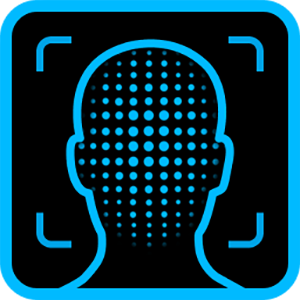People Tracker: Video Analytics Software to Locate Lost People Faster
As many as 600,000 people are reported missing in the U.S. each year, with up to 100,000 people missing at any given time. Most people, such as lost children in large venues like shopping centers or elderly people with dementia wandering away from hospitals or nursing homes, are located. However, these searches often come with an extensive use of resources and labor.
In the past, security or law enforcement personnel would be required to manually watch video footage from multiple cameras, making their search difficult and time-consuming. Advances in technology such as AI computer vision, including People Tracker, make finding nearby lost people much easier.
What is video analytics software People Tracker?
People Tracker is a software tool that helps make video surveillance investigations more efficient using video analytics. It uses three main features to speed up analysis and locate lost people faster: (1) person attribute recognition, (2) person re-identification, and (3) optional facial recognition.
Person Attribute Recognition
Person attribute recognition uses deep learning to extract data from images. These data attributes can include gender, age, top and bottom clothing types, clothing color, and accessories such as a bag or hat.
When a child gets lost in a shopping center, security personnel typically do not have a pre-existing image of the child. However, they do know the child’s attributes and characteristics, such as their age, gender, and what kind of clothes they are wearing. Using this information, security can use person attribute recognition technology to locate the child in surveillance footage. Guardians only need to describe these physical attributes—for example, a five-year-old boy wearing a green t-shirt, blue jeans, and a baseball cap—and security personnel can use person attribute recognition to search through recorded videos in the shopping center to locate the child.
Person Re-Identification
Person re-identification uses full-body images of people from one camera to find and track them across other cameras. It matches the person’s appearance using features such as clothing, height, or posture and tracks the person in chronological order across camera footage to expedite the search. Cameras may capture a person from a different angle or have different settings that affect how a person appears in its footage. Person re-identification takes these variations into account and uses advanced AI algorithms, such as feature extraction and deep neural networks. This technology extracts unique features from footage to match them across cameras and make the lost person easier to find.
Optional Facial Recognition
Facial recognition uses facial features captured on camera to identify and search for a lost person. The optional use of the integrated FaceMe® facial recognition can analyze the face of a lost child or elderly person to improve the accuracy of the search. Along with using images captured by the camera, it can also use a pre-existing image of the lost person to improve search results.
Why is video analytics software needed for finding lost people?
People of all ages, demographics, and abilities can get lost, especially young children, elderly people, and people with dementia. That means surveillance personnel may need to search a wide area to locate them. Without People Tracker, it is more difficult to conduct an effective and efficient search and valuable, critical time may be wasted.
Video analytics software uses new AI and machine learning technologies to save time and labor. These technologies can also capture details that human eye search parties may miss, whether they are out searching in person or manually reviewing video recordings. People Tracker software can leverage the existing video surveillance infrastructure, allowing for more in-depth searching based on specific attributes and simultaneous searches. As a result, these video surveillance solutions quickly locate lost individuals and return them to safety, as well as improving public safety by using this technology on a large scale.
How does People Tracker improve search efficiency?
Video analytics software speeds up the search for a lost person. By using AI processes, it reduces the chance of human error and fatigue that comes with manually searching through so much footage individually. Each AI feature also plays its unique role in enhancing video search efficiency.
1. Begin searching with person attribute recognition
Person attribute recognition uses specific characteristics of the lost person to find them on one camera, even in a busy location. It uses attributes such as their age, gender, clothing, and items they may be carrying with them to identify them. This technology searches across several cameras to pinpoint the person matching the given description, and it speeds up the search process.
2. Locate across cameras with person re-identification
Once the person’s image is located in the camera footage, person re-identification uses that image to search for them across all other cameras at the location. It analyzes across all cameras at once, making it much faster than manually watching each recording carefully one by one. For example, if person attribute recognition found the lost child’s image outside a toy store at a large shopping center, person re-identification will find all the cameras where that child’s image has appeared and find them across the building at the food court. This way, surveillance personnel can act quickly, find the child, and return them to their guardian.
3. Use optional facial recognition for a more accurate search
Facial recognition is optional with People Tracker, but it allows for a more detailed and accurate search for the lost person. This technology extracts facial feature values in vector form to analyze and compare them with pre-registered facial images. Facial recognition makes it possible to accurately identify the facial features of a lost person from video footage to locate them more precisely. It becomes especially useful during events like fundraisers where many people might be wearing the same kinds of clothes to promote a cause. If someone gets lost, facial recognition prevents cameras from potential incorrect identification based on similar attributes.
Applications for People Tracker
Areas with many elderly people, young children, and high foot traffic can all benefit from AI video analytics. When used in these settings, it reduces the time needed to find people who wander or get lost within the area, making it especially helpful in the following places.
- Hospitals: Hospitals are complex and have many restricted areas. If a patient gets lost and mistakenly enters an unauthorized area, it creates safety concerns for the patient and others in that location. People Tracker can help find these lost patients before they enter a restricted area, therefore enhancing everyone’s safety.
- Long-term care facilities: Residents and visitors of long-term care facilities often change, which makes it easy for high-risk elderly and disabled patients to become disoriented and lost. Video analytics technology can quickly locate these patients and minimize the stress they may feel from getting lost.
- Shopping centers and department stores: In public places with high foot traffic, People Tracker can identify the movements of lost people based on their body shape, gender, and age. It can also identify their clothing, hats, bags, and other characteristics. By adding optional facial recognition technology, store surveillance personnel can more accurately and quickly find the lost person and reunite them with their loved ones.

CyberLink People Tracker: A 3-in-1 smart search solution
CyberLink People Tracker perfectly integrates person attribute recognition, person re-identification, and facial recognition technologies to provide a flexible and robust AI video surveillance solution. While its optional facial recognition is an asset to the software, People Tracker does not require it to make accurate, efficient identifications. It can still locate lost people through other physical attributes when a facial image is not available or if there are user privacy concerns that prevent facial recognition from being used.
People Tracker is powered by AI computer vision. Through real-time analysis of surveillance video, it can identify a lost person based on their body shape, gender, age, clothing, accessories, and other physical characteristics. The software can also integrate with major mainstream video management systems (VMS).
Unlike traditional facial recognition technology, People Tracker can locate people even if the facial image is blurry. It can then identify specific individuals’ entry and exit records using powerful computing capacity. With these capabilities, People Tracker can search for lost individuals across multiple cameras within a venue, as well as track their movements over a 48-hour period. Additionally, People Tracker can be combined with FaceMe® Security, CyberLink’s facial recognition solution. This technology was designed for security and access control to create a more comprehensive and intelligent security environment.
People Tracker can also be applied for other use cases aside from finding lost people in busy areas such as train stations, airports, sports stadiums, and other places with a large number of people. For example, it can help security and law enforcement find suspects in public places, thereby improving public safety. People Tracker has aided in a wide range of fields, such as security monitoring, traffic control, and more. Its applications will only become more diverse with even further growth as technology advances.







